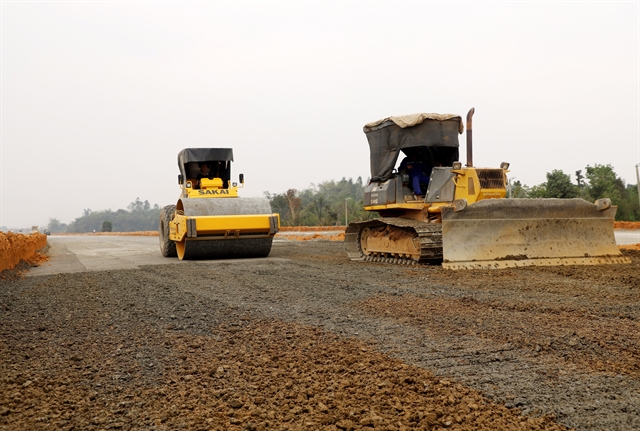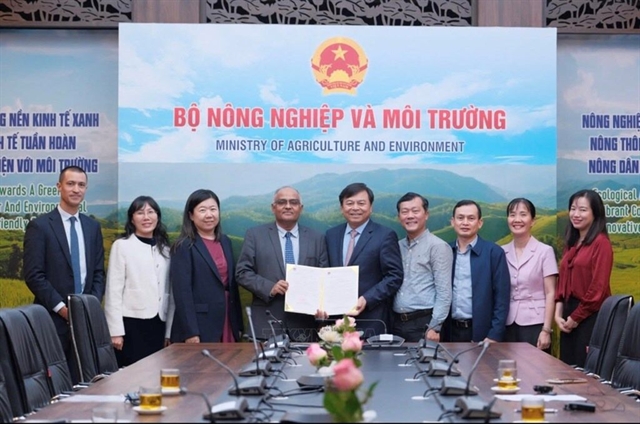 Opinion
Opinion

Hà Công Tuấn, deputy minister of Agriculture and Rural Development, speaks to the newspaper Thời báo Kinh tế Việt Nam (Vietnam Economic Times) about his ministry’s resolve to make forests a key resource for national economic development
 |
| Hà Công Tuấn |
Hà Công Tuấn, deputy minister of Agriculture and Rural Development, speaks to the newspaper Thời báo Kinh tế Việt Nam (Vietnam Economic Times) about his ministry’s resolve to make forests a key resource for national economic development
How does the 2017 Law on Forestry compare to the 2004 Law on Forestry Protection and Development?
The new forestry law consists of 12 chapters with 108 articles stipulating management, protection, development and use of forests, along with processing and trade of forest products. The law will come into force on January 1st 2019.
The 2004 law only focused on forest formation, ranging from forest management to forest development. Meanwhile the 2017 law covers a wider range, from forest product processing and trading to science and technology and international co-operation. The law then reiterates that forestry is the foundation of the value chain of forestry products. The law’s concerns range from management, protection, development, forest use, forest product production and commerce. These are the new points of the 2017 Law on Forestry, and they build significantly on the 2004 Law on Forestry Protection and Development.
Another point I just want to emphasise is that the new Law on Forestry has been institutionalised in the 2013 Constitution. Where the previous forestry law says that the forests belong to the people, the 2017 Law on Forestry divides forest ownership into two types: first, forests that are owned by the people but the State is their sole representative; and second, forests owned by organisations, households or individuals in accordance with Vietnamese laws.
The new forestry law focuses on the economic development of forests. Don’t you think that the task of forest protection will now be secondary to the economic development function?
I just want to reiterate that the 2017 Law on Forestry has been expanded, but forestry protection remains one of the essential tasks of the law. The potential economic value generated from the forests has been carefully calculated. In reality, we have closed the natural forests and have done everything to develop sustainably all the production forests. We have tried to help foresters develop their business and expand while still protecting forests.
The new law includes provisions on “forest environmental service”, a type of non-forestry product that has been created by the demand for economic development and the realities of people’s daily lives. But that policy is mainly based on the principle that forest environmental services beneficiaries must pay their service providers. That’s a new point in the 2017 forest law – a new financial source to reinvest into the forest.
In 2016, we already collected VNĐ1.35 trillion from the forest environmental services. In 2017, we expect to earn about VNĐ1.65 trillion. And in 2018 the sum will be about VNĐ 2 trillion.
Could you talk a bit about benefits that foresters enjoy when the new law comes into force?
I hope the new law will benefit both forest owners and forest protectors. The rights and responsibilities of forest owners have been further expanded and consolidated in the 2017 law.
We all agree that the forest is a natural resource that can be regenerated, so if we have good policies towards forest ownership we’ll be able to encourage organisations and individuals to invest in poor forests and then enjoy benefits from them. No doubt they will manage the forests better and more efficiently.
The new forest law will create favorable conditions for forest product processing and business. The law has focused on forestry development policies that will create favorable conditions for enterprises to co-operate or to go into joint ventures with forest owners to apply advanced technology in forestry development.
How will the new law help State forest enterprises improve their forest management tasks?
Of the 16.2 million ha of forest land, only 1.6 million ha is managed by 154 State enterprises.
In a near future, we’ll launch a campaign to restructure all 154 State enterprises into 139 enterprises in accordance with Government Decree 118. According to the plan, some 500,000ha of forests will be re-allocated to households. We have set a deadline to accomplish the re-arrangement of State forest enterprises by June 2018 in accordance with Government Decree 118. — VNS




